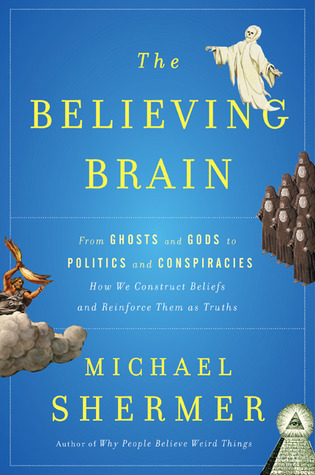More on this book
Community
Kindle Notes & Highlights
The first process I call patternicity: the tendency to find meaningful patterns in both meaningful and meaningless data. The second process I call agenticity: the tendency to infuse patterns with meaning, intention, and agency. We can’t help it.
Once beliefs are formed, the brain begins to look for and find confirmatory evidence in support of those beliefs, which adds an emotional boost of further confidence in the beliefs and thereby accelerates the process of reinforcing them, and round and round the process goes in a positive feedback loop of belief confirmation.
Our brains are belief engines, evolved pattern-recognition machines that connect the dots and create meaning out of the patterns that we think we see in nature.
The dose is the key. Too much of it and you are likely to be making lots of Type I errors—false positives—in which you find connections that are not really there. Too little and you make Type II errors—false negatives—in which you miss connections that are real. The signal-to-noise ratio is everything.
That is, finding new and useful patterns is good, finding new patterns everywhere and being unable to discriminate between them is bad.
our belief systems are structured such that we will almost always find a way to support what we want to believe.
Memories are formed as part of the association learning system of making connections between things and events in the environment, and repetitive associations between them generate new dendritic and synaptic connections between neurons, which are then strengthened through additional repetition or weakened through disuse. Use it or lose it.
the psychology of belief first and evidence second is once again borne out.
“I know that most men, including those at ease with problems of the greatest complexity, can seldom accept even the simplest and most obvious truth if it be such as would oblige them to admit the falsity of conclusions which they have delighted in explaining to colleagues, which they have proudly taught to others, and
which they have woven, thread by thread, into the fabric of their lives.”
“It is difficult to get a man to understand something when his job depends on...
This highlight has been truncated due to consecutive passage length restrictions.
Our beliefs are buffeted by a host of these and additional cognitive biases that I will briefly mention here (in alphabetical order):
Middle World—a land midway between short and long, small and large, slow and fast, young and old. Out of alliterative preference, I call it Middle Land. In the Middle Land of space, our senses evolved for perceiving objects of middling size—between, say, grains of sand and mountain ranges. We are not equipped to perceive atoms and germs, on one end of the scale, or galaxies and expanding universes, on the other end. In the Middle Land of speed, we can detect objects moving at a walking or running pace, but the glacially slow movement of continents (and glaciers) and the bogglingly fast speed
...more


